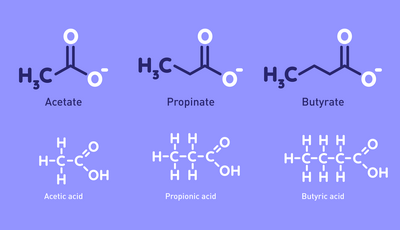
Butyrate is a volatile organic compound derived from bacteria that is widely used by some plants to prevent the decomposition of plant tissue or as a preservative in meat and dairy products. Butyrate, also called butanol, is a glycerol-like carboxyl compound with the molecular structure CF₀CHC₄CHC⁃. Considered an ester, butyrate is colorless, odorless and soluble in ethanol, ether and water. Isobutyrate is an isomer of butyrate.
Butyrate can be obtained from many foods. The most common sources of butyrate are yeast, yeast, mushrooms, yeast extracts and yeast, plants, berries, mushrooms, vegetables, poultry, beef, dairy products, and yeast extracts. Yeast is probably the best known source of butyrate. However, other sources of butyrate can also be used in food and flavoring (see below).
Butyrate is not naturally present in the human body. It can only enter the digestive tract through the digestive tract, destroying plant tissues for energy in the digestive system. With a normal diet, butyrate is produced in the stomach. In this process, bacteria break down starches (which are the main source of dietary carbohydrates) and sugars from plant sources for energy.
However, the production of butyrate in the stomach is stimulated by hormones such as glucocorticoids and adrenal corticosteroids. They bind to amino acids in the secretions of the stomach and cause them to break down into simpler molecules (such as fatty acids). As a result, the breakdown of starch and sugars into simpler forms stimulates the production of butyrate. This leads to the formation of short chain fatty acids and the production of acetate. You can read more about this at this site.
Acetate is a mixture of butyrate and carbon dioxide and forms long-chain polysaccharides. ketone bodies. and acetone can also be found in blood. ATA (adenosine triphosphate). Acetic acid in urine is excreted in sweat.
The production of bile and the metabolism of butyrate produces ketones, which are also referred to as ketones. Ketone bodies can cause the symptoms of ketoacidosis, especially in people who have low levels of the enzyme acetoacetyl-coenzyme A (ALA), an important precursor for ketone production. KDA. BHB is produced in the liver and is used by the body for making acetone to provide energy; in addition to providing the body with essential substances such as lipids and fats.
Also Read: What Does the AIP Diet Has to Offer?
In a laboratory test, the levels of bile acid can be measured in mice. The animals were fed low-fat, high-protein and high-cholesterol diets, respectively. The mice showed a significant increase in the production of ketone bodies in the liver. The mice also showed a decrease in the levels of acetic acid and butyrate excreted from the liver.

Another laboratory test measures the level of butyrate in human urine in response to a ketone body challenge. KETONE BODY challenge, wherein the human body is exposed to ketone body challenges, is a laboratory test that measures the metabolic rate of the body in response to a ketone challenge. KETONESUMERASE, which measures the levels of butyrate in the urine of an individual person’s urine after a ketone challenge; and the levels of ketone bodies in the urine of mice, in response to a ketone challenge. KETONESUMERASE-MIRACLE and the levels of ketone bodies in mice after ketone challenge in response to a ketone challenge are measured using methods including isotope-tracer analysis. KETONESUMERASE-MEQ-TEST. The ketone challenge method provides the ability to measure butyrate levels and other metabolic reactions of humans at the same time; and is an accurate measure of the metabolic rate of the human body. The Ketonesumerase test is based on the fact that the ketone challenge produces a decrease in the levels of acetone and acetic acid in the urine. Ketonesumerase is also a useful test for people with kidney problems or people who have a low amount of ALA.
Read More: The Best Foods to Lower Cholesterol
Butyrate is also known as ketone-citrate and has the ability to reduce the amounts of acetic acid in the urine. This reduces the amounts of acidity in the urine. Acetic acid is a by-product of glycolysis, the breakdown of sugars. and starches.
The presence of ketonesumerase in the urine suggests that a metabolic switch has occurred and that bile acid is being produced and eliminated. Bile acid is an important acid in the human body and may be used to break down fat. The ketone test is particularly useful for individuals with diabetes. Diabetic ketoacidosis is a condition in which ketone bodies build up in the bloodstream, causing high blood glucose levels and an increased risk of diabetic ketoacidosis.
Bile acid may enter the bloodstream by inhalation of the breath. Bile acids are secreted into the intestines when the liver releases cholesterol and bile acids are transported to the liver for metabolism. Bile acids and butyrate are transported along the bloodstream via the lymphatic system and reach the colon.